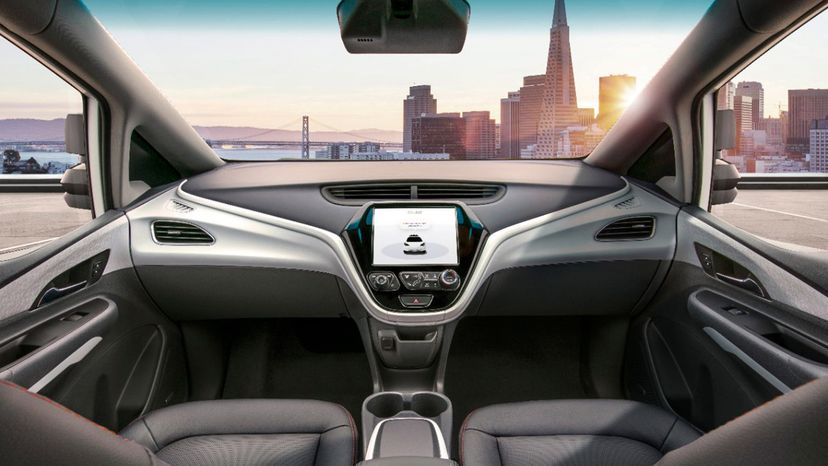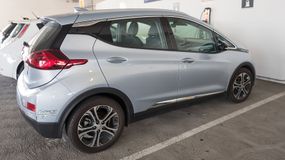
Get ready for a self-driving car that has no steering wheel or pedals. General Motors developed the car, known as the Cruise AV, for use in ride-share fleets and expects to launch it in 2019.
The Cruise AV isn't the first car to be designed without a steering wheel and pedals, but it is the first such car to be slated for production. GM wants to eliminate car crashes, congestion-free roads and harmful tailpipe emissions. The company says the Cruise AV can get us there, and here's why:
Advertisement
- 94 percent of crashes are caused by human error.
- About one out of every three cars on the street at any given time is looking for parking, but self-driving cars can do that more efficiently.
- Self-driving cars will make it easier for elderly people or people with mobility issues to get around.

The automaker based the Cruise AV on the Chevy Bolt, but it's much more advanced than previous self-driving versions of the Bolt. A San Francisco firm called Cruise Automation developed the software, while safety and engineering was completed in Michigan. GM said in its 2018 Self-driving Safety Report that every system has been evaluated for potential failures, and there are backup batteries in case the main power source encounters problems. The car also has two data recorders and cybersecurity features.
"The vehicle is designed for an intuitive and familiar user experience in a ride-sharing service," according to GM's report, and the company says that consumers will have the chance to get used to the technology.
The cabin layout is symmetrical, since information doesn't need to be oriented toward one person. The seating follows a conventional layout of four forward-facing seats, even though there's really no need. GM reps declined to discuss why they stuck with this traditional seating arrangement. Touch-screen tablets give riders real-time information about the ride. In an emergency, riders can stop the car, which will pull over as soon as it's safe. The car also will pull over if it detects a problem.
GM refers to "stacked predictions" and "stacked maneuvers" when describing the complexity of the car's decision-making process. An example of a stacked prediction is expecting that a car turning left will yield to a pedestrian in a crosswalk. Stacked maneuvers simply refer to managing multiple road challenges together or in quick succession.
Not surprisingly, the Cruise AV will be tracked. The cars will travel on a route determined by the ride-share program's mapping software. Each Cruise AV in the fleet can share information in real time, which GM calls "fleet learning capability." For example, if a Cruise AV encounters a closed road, it will send that information to other Cruise AVs, which will automatically adjust routes to avoid that road. The Cruise AV calculates its path 10 times per second and is always scanning multiple paths via an intricate network of sensors and cameras.
GM announced in January that it filed a petition with the Department of Transportation to make the Cruise AV available in 2019. The National Highway Traffic and Safety Administration standards say that vehicles must have driver controls, unless the manufacturer can prove the vehicle is as safe as a regular one. If the petition is approved, the manufacturer is limited to 2,500 such vehicles per year. Even after federal approval, GM will need to appeal to individual states. Only seven states have approved driverless cars.
Advertisement